Marvel Cinematic Retrospective
Fans today are living in a Golden Age of movies based on comic books. Kids, teenagers, and adults have grown up on the exploits of superheroes since the 1910's, and more recently in film as well. Among the various comic book producers, few were as prominent and beloved as Marvel Comics. It was small wonder that they began to produce movies of their own.
This is a multi-part examination of that effort.
Spider-man has always been one of Marvel Comic's biggest heroes, dating back to his 1962 creation by Stan Lee and Steve Ditko. Most fans are familiar with his relatively recent film outings since 2002, but Spider-man has been involved in film even longer.
The first film of any sort to come out was an unauthorized fan production, released in 1969 by Donald Glut. Though charming to an extent, Glut produced the short film on a shoestring budget. Other films released throughout the years, including a 1974 fan film based on Amazing Spider-Man #15, opens a new window , 1992's The Green Goblin's Last Stand, and the much later Spider-Man Lives: A Miles Morales Story, opens a new window in 2015.
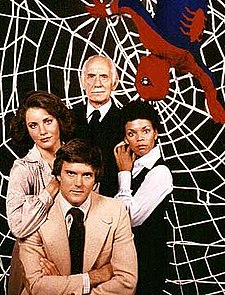
The first official outing of a live-action Spider-Man was a 1977 film produced by Columbia Pictures and CBS. The film aired on CBS in America and received a theatrical release internationally. The 90-minute film starred Nicholas Hammond in the title role. He and the rest of the cast produced thirteen episodes of the series before it was cancelled. Internationally, two more films released; the two-part episode "Deadly Dust" released as Spider-Man Strikes Back and 1981's Spider-Man: The Dragon's Challenge utilized footage from the series finale, "The Chinese Web." Despite a relatively short run, the series enjoyed wide success, although some fans felt that the series strayed too far from the source material.
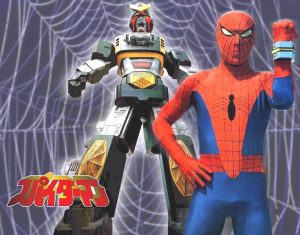
Across the Pacific Ocean, Toei Co. of Japan secured the rights to produce Spider-Man television series and films. In 1978, they released Supaidaman, commonly known as Japanese Spider-Man, featuring a locallized adaptation of the superhero who wore the familiar costume, but featured a vastly different origin series. This version of Spider-Man fought larger than life villains and monsters and often made use of a giant robot called Leopardon, which he piloted. Leopardon was the origin of the Super Sentai mech robots that would become popular in the future. Most recently, Supaidaman was referenced in the book version of Ready Player One , opens a new windowby Ernest Cline.
In the United States, Spider-Man struggled to make it to the big screen. The first serious attempt at making a movie rested with Cannon Films in 1985. The producers acquired a budget of about $20 million, but failed to agree upon a story or cast. As the year went by, much of Spider-Man's budget went to the ill-fated Superman IV and Masters of the Universe films. Several people joined and left the project at various points, including James Cameron, but the project fell apart. By then, Columbia Pictures had full control of Spider-Man's film outings, including substantial cuts of revenue, as long as they produced a movie every 6 years.
While Cannon Films struggled to make the film, and stay afloat in general, Spider-Man's film rights received production extensions into 1992, and eventually 1996. The unfortunate mishandling resulted in litigation and financial trouble, including bankruptcy for Marvel, although the company managed to recover. The rights to Spider-Man briefly returned to Marvel and Stan Lee, before they were resold in full to Columbia Pictures, now owned by Sony Pictures Entertainment.
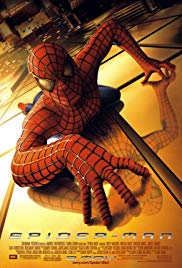
After more than a decade of languishing in pre-production, a proper live-action Spider-Man film was in the works. As part of the acquisition, Columbia Pictures also procured the rights to James Cameron's script for the 1985 attempt, although the script was not used. Development of the film properly began in 2000. Columbia hired Sam Raimi to direct and David Koepp to write the screenplay, which starred Tobey Maguire in the lead-role opposite Willem Dafoe as Norman Osborn, and joined by James Franco and Kirsten Dunst, among others. The story follows the origin of Spider-Man, his conflict with Norman Osborn/The Green Goblin, and his death, reminiscent of the The Green Goblin's Last Stand, as originally depicted in "The Day Gwen Stacy Died." Production was delayed due to the September 11 Terrorist Attacks, and the film was eventually released in the summer of 2002.
Columbia Pictures and Sony Entertainment found enourmous success with Spider-Man. On a budget of $139 million, the film made $821 million at the box office, including being the first film ever to make more than $100 million in its opening weekend. The film's success cemented not only Spider-Man's legacy, but the legacy of comic book movies as certified hits. Marvel Comics and other studios had produced movies based on comic books for years by now, including Superman, Batman, Blade, and the X-men, but Spider-Man was by far the biggest ever and had a much wider global reach. Production on subsequent movies began immediately.
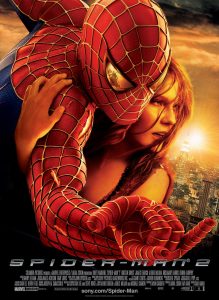
Production for Spider-Man 2, though normal for most movies, was much more rapid than the previous attempts made. By mid-2003, all of the various parts lined up, with Alfred Molina joining the cast as Otto Octavius / Dr. Octopus. On a $200 million budget, the film made $783 million, proving that the first movie was no fluke, and earning numerous awards, including the Academy Award for Best Visual Effects. The story follows not only Spider-Man's conflict with the new villain, but also the struggles with his 'normal' life as Peter Parker. The film also spawned a very well-received video game adaptation on Play Station 2 which to this day is still considered one of the best video games based on a movie or comic book character.
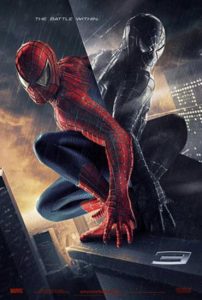
Four years later followed before the last of the 'Sam Raimi trilogy' hit theaters. Spider-Man 3 was the most expensive movie ever produced up to that point, at $258 million unadjusted. While it did suffer a bit critically, it sold $893 million at the box office. The film follows Spider-Man's first onscreen encounter with the alien symbiote that formed his black suit and would later become Venom, while also having Spider-Man face off against the Sandman, and a new Green Goblin in the form of his nemesis' son, Harry Osborn.
Despite the success of the films, it was not to last. Studio executives clashed with Raimi over the direction of future Spider-Man movies. Raimi left the series, and Columbia decided to reboot the film series in 2012. The future of those movies shall be discussed in Spider-Man Part 2 of our Retrospective.
Looking for something else? Want to see other Spider-Man items in our inventory? The St. Tammany Parish Library is happy to offer the use of our online catalog, opens a new window for more information on this and other searches. Happy watching!


Add a comment to: Marvel Cinematic Retrospective: Spider-Man Part 1